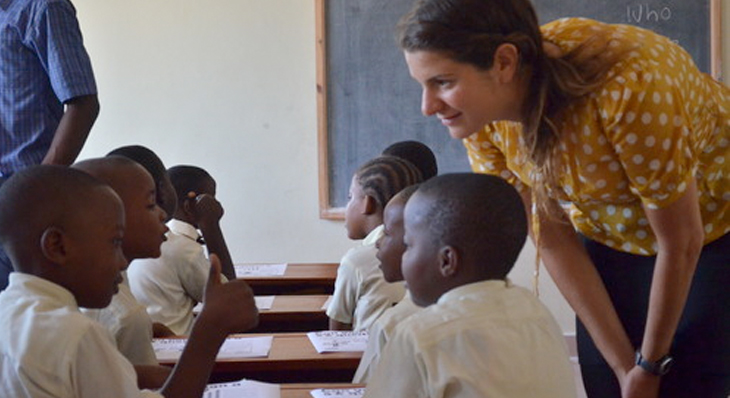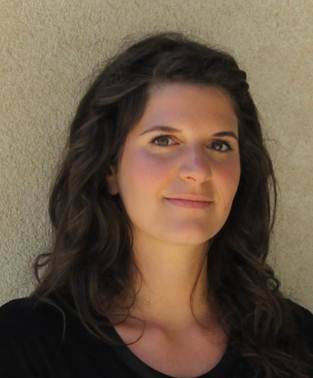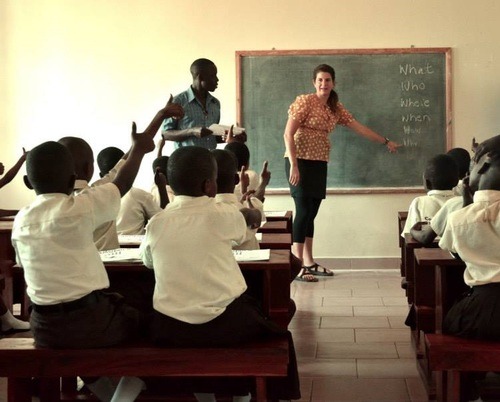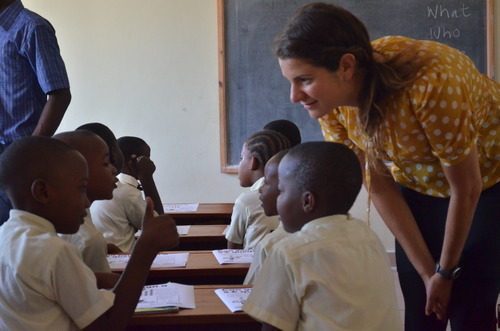
Meet our new blogger, Pamela Levine
Meet Pamela Levine, a Stanford Education Technology Specialist, Nearpod User, and new Guest Blogger!

Hi, I’m Pamela Levine. I’m a passionate educator dedicated to helping teachers develop their education technology skills and vision. The path that lead me here, however, began in a classroom with very little technology at all: as a Peace Corps volunteer in rural Tanzania, I spent evenings teaching English to elementary-aged students by candlelight. The classes were not part of my students’ required coursework, nevertheless, they showed up every day with a voracious appetite to learn and practice. In Tanzania, a good quality English education is a dream for most students in remote villages, where Swahili is the primary spoken language and the language of instruction at the elementary level. A strong grasp on the English language can contribute to one’s success in secondary school and make accessible a broader range of post-secondary education and employment prospects. My students’ energy and enthusiasm for learning made me excited about education as a powerful force for opportunity and change.


I decided to apply to graduate school to study Education. This entailed my taking weekly, 4-hour bus rides on a dirt road to the closest internet cafe, in order to complete and submit my applications. Many bus rides later, I was accepted to the Stanford Graduate School of Education, where I attended after completing my two-year Peace Corps service in 2008. I received an M.A. in Education Policy, Organization, and Leadership Studies and promptly moved to Washington D.C. to work at a large nonprofit human development organization in their U.S. Education division. Invaluable as it was to learn about and contribute to education research and policy analysis, I missed the classroom, and returned to school to obtain my teaching certificate in Elementary Education.
In the years that followed, I taught 2nd grade in the D.C. Public Schools, and 3rd grade in a D.C. Public Charter School. At first, in many ways things felt even more complicated than in the rural African classrooms where I’d been years earlier. Most of my students were from disadvantaged backgrounds, lived amongst community violence or in difficult home situations, and were behind or below grade-level on various measures of educational achievement. I needed to make learning matter to them, while also helping them meet or exceed federal and state assessment targets.
Between the handful of classroom computers and my personal iPad, I tried to capitalize on a variety of websites and applications to help me more effectively reach my students. Simply having the internet and computing devices available, though, was not enough; technology needed to be implemented purposefully and in ways driven by educational goals. (That thoughtful technology integration can increase student engagement and produce significant gains in achievement is affirmed in a recent study, Using Technology to Support At-Risk Students’ Learning, by the Alliance for Excellent Education and the Stanford Center for Opportunity Policy in Education). With instructional planning and use of appropriate tools for my curriculum and grade level, I was able to present information in understandable and dynamic ways, share and provide recognition for student work, support students with special needs, expand the power of assessments and data, and make learning rich and relevant. Soon, I began helping other teachers and administrators at my school do the same.
In 2012, I returned to the Stanford Graduate School of Education to apply my experience to teaching other educators about effective, innovative, and aligned use of technology in K-12 and higher education classrooms as an Education Technology Specialist. Since then, I’ve visited and taught with technology in schools around the world, and have come to even more heartily agree with Alliance for Excellent Education president Bob Wise’s sentiment that “replacing teachers with technology is not a successful formula. Instead, strong gains in achievement occur by pairing technology with classroom teachers who provide real-time support and encouragement.”
Nearpod shares this point of view. “Rather than replace the teacher, Nearpod was developed to turn mobile devices into teaching assistants,” says CEO Guido Kovalkys. I couldn’t be more pleased to collaborate with an education technology company with not only a great product, but also with this founding principle.
I’m also inspired by the creativity and passion of Nearpod’s users. After reading stories and receiving fellow teachers’ endorsements, last year, I began using Nearpod in my “Digital Classroom: Technologies and Practices for Educators” course at Stanford and in some of the teacher professional development seminars I lead. My favorite Nearpod feature at the moment is the ‘Draw it’ function, which I use to facilitate student creation and design thinking activities. For me, the most powerful learning often happens in the discussions and “teachable moments” that can be catalyzed by student-generated work.
I’m looking forward to finding and sharing more about how Nearpod is being used and having an impact. Please contact me at [email protected] if you have a strong Nearpod story that you’d like to produce a blog post or case study around.
It’s great to meet you!
Pamela Levine

Nearpod’s award-winning platform is used by thousands of schools around the globe, transforming classroom engagement.








